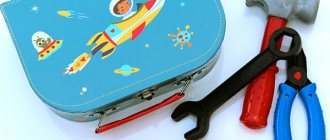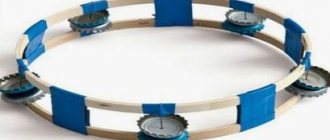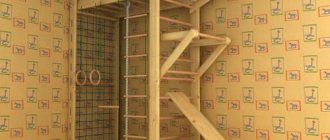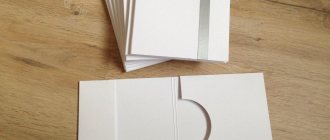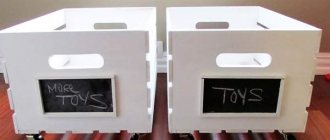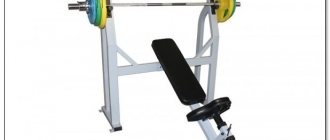On farms or individual farms, there is often a need to raise chickens at home. Of course, you can use laying hens for these purposes, but raising chickens naturally at home will take a lot of time, and the offspring will be small.
Therefore, many people use an incubator to breed chickens at home. Of course, there are industrial devices used for large industrial production, but simple incubators, which you can easily make with your own hands, are also perfect for small farms.
Today we will tell you how to make an incubator with your own hands, from the simplest to the more complex.
How to make your own incubator from a cardboard box?
The simplest incubator for raising chickens at home, which you can make with your own hands, is a design made from a cardboard box. It is done this way:
- cut a small window in the side of the cardboard box;
- Pass three sockets intended for incandescent lamps inside the box. For this purpose, you need to make three holes at the top of the box;
- lamps for the incubator should have a power of 25 W and be located at a distance of about 15 centimeters from the eggs;
- in the front part of the structure you should make a door with your own hands, and they must correspond to the parameters of 40 by 40 centimeters. The door should fit as tightly as possible to the incubator body so that the structure does not release heat to the outside;
- take small boards and make a special tray out of them in the form of a wooden frame;
- place a thermometer on the side of such a tray, and under the tray itself place a container of water measuring 12 by 22 centimeters;
- Up to 60 chicken eggs should be placed in such a tray, and from the first day of using the incubator for its intended purpose, do not forget to turn them.
So, we looked at the simplest version of a do-it-yourself incubator. If it is necessary to raise chickens in a minimum quantity at home, this design will be quite sufficient.
What is it needed for
The egg turning timer in the incubator is a device that opens and closes an electrical circuit after the same period of time, that is, in simple terms, a primitive relay. Our task is to turn off and then turn on the main components of the incubator, thus automating the system as much as possible and minimizing possible errors caused by the human factor.
The timer, in addition to turning the eggs, also provides the following functions:
- temperature control;
- ensuring forced air exchange;
- starting and turning off lighting.
The microcircuit on the basis of which such a device is manufactured must meet two main conditions: low current switching with high resistance of the key element itself.
The best option in this case is the CMOS electronic circuit technology, which has both n- and p-channel field-effect transistors, which provides higher switching speed and is also energy-saving.
The easiest way at home is to use timing chips K176IE5 or KR512PS10, sold in any electronics store. Based on them, the timer will work for a long time and, most importantly, uninterruptedly.
The operating principle of the device, made on the basis of the K176IE5 microcircuit, involves the sequential execution of six actions:
- The system starts (circuit closure).
- Pause.
- A pulse voltage is applied to the LED (thirty-two cycles).
- The resistor turns off.
- A charge is supplied to the node.
- The system turns off (circuit open).
Then the process starts again and so on. Everything is quite simple, and each of the six above actions can be adjusted, depending on the specific incubation period.
If the K176IE5 chip assumes the only possible cycle of actions, then on the KR512PS10 the timer operates in two different modes: variable or constant.
In the first case, the system turns on and off automatically at regular intervals (the mode is configured using jumper S1), in the second, the system turns on with a programmed delay once and then works until it is forced to turn off.
High complexity incubator
Now let's look at how to make a more complex incubator with your own hands. But for this you need to comply with the following formalities:
- if the chamber openings for ventilation are closed, then the chamber must be completely sealed;
- when opening the ventilation holes, the air should be mixed evenly, otherwise the temperature inside the chamber will not be uniform and this is very bad for the chickens;
- It is advisable to equip the incubator with forced ventilation.
You can also equip your home incubator with a special device that can automatically turn the tray along with the eggs and save you from this work. So, you should turn the eggs once an hour with your own hands. In the absence of a special device, the eggs are turned over at least every three hours. Such devices should not come into contact with eggs.
For the first half of the day, the temperature in the incubator should be up to 41 degrees, then it is gradually reduced to 37.5, respectively. The required level of relative humidity is about 53 percent. Before hatching the chicks, the temperature will need to be lowered further, and the importance should be increased to 80 percent.
Why turn eggs in an incubator?
People of the older generation probably remember the kind and clever children's story by N. Nosov about a family of chickens. So, observant young naturalists, having built an incubator with their own hands, tried to solve the problem of how exactly and how often the eggs should be turned (similar to how a hen does it).
Why turn over the material placed in the incubator? There are several reasons for this:
- When turning, uniform heating of the embryos occurs, since the heat source in the device is fixed motionless on only one side.
- Uniform flow of fresh air around the eggs. This problem is relevant both when hatching chicks and when using a hen.
- Periodic turning over prevents the embryo from adhering to the shell membrane. If this is neglected, the percentage of chicks hatching is significantly reduced as the embryos die.
Important! Most experts recommend turning hatching eggs until the embryonic membrane (allantois) is completely formed and closed.
You can monitor the process of formation and closure of the embryonic membrane using an ovoscope. The complete closure of the allantois is indicated by an increase in the air chamber at the blunt end. From the sharp end the eggs become dark.
How to make an electronically controlled incubator with your own hands?
A more advanced model is an incubator equipped with electronic control. It can be done like this:
- the frame for the incubator is made on the basis of wooden beams, then it is sheathed with plywood on all sides;
- the axle is attached to the top of the chamber, then a tray is attached to it for a maximum of 50 eggs;
- The dimensions of the tray are 250 by 400 mm, its height is 50 mm;
- the tray is made on the basis of a 2 mm metal mesh;
- The inside of the tray is covered with nylon mesh. The eggs are laid out so that their sharp end is at the bottom;
- for heating, take incandescent lamps (4 pieces) with a power of 25 W;
- To create the required level of humidity in the chamber, you will need a white tin bath measuring 100 by 200 and 50 mm filled with water. Three copper arcs made of wire in the shape of the letter P, 80 mm high, are soldered to the bath;
- you need to attach a fabric to the wire, which can increase the surface area for water evaporation;
- To get air inside the chamber, you need to make 8 holes in the ceiling with a diameter of about 20 mm each. 10 holes of the same size should be made in the bottom panel. Thus, air will enter the chamber from below, be heated by incandescent lamps, and when exiting through the upper holes it will heat the eggs;
- install a special temperature sensor that will regulate the temperature level.
During the first six days of operation, the temperature inside the incubator should be kept at 38 degrees. And then it can be gradually reduced by half a degree per day. In addition, you will need to turn the tray of eggs over.
Once every three days you will need to pour water into a special bath and wash the fabric in soapy water to remove salt deposits.
Self-assembly of a multi-tier incubator
An incubator of this type is heated automatically by electricity; it must operate from a regular 220 V network. To heat the air, you will need six spirals, which are taken from the tiled insulation of the iron and connected in series to each other.
To maintain a comfortable temperature in a chamber of this type, you need to take a relay equipped with an automatic contact measuring device.
This incubator has the following parameters:
- height 80 centimeters;
- depth 52 centimeters;
- width 83 centimeters respectively.
The construction looks like this:
- the frame is made on the basis of pine bars 40 mm long;
- the bars are covered on all sides with plywood with a thickness of 3 mm;
- the free space between the block and the plywood is filled with dry shavings or sawdust ; you can also take polystyrene foam to insulate the structure;
- the door in the form of a separate panel is attached to the rear wall of the incubator frame;
- hinged type canopies are used as fasteners.
Inside, the incubator is divided into three compartments by installing three partitions. The side compartments should be wider than the middle compartment. Their width should be 2700 mm, and the width of the middle compartment should be 190 mm, respectively. The partitions are made from 4 mm thick plywood. There should be a gap of approximately 60 mm between them and the ceiling of the structure. Then corners measuring 35 by 35 mm made of duralumin should be attached to the ceiling parallel to the partitions.
Slots are made in the lower and upper parts of the chamber, which will serve as ventilation, thanks to which the temperature will be the same in all parts of the incubator.
Three trays are placed in the side parts for the incubation period, and one will be needed for hatching. A contact type thermometer is installed on the back wall of the central part of the incubator , which is attached with a psychrometer to the front part.
In the middle compartment, a heating device is installed approximately 30 centimeters up from the bottom. Each compartment must have a separately installed door.
For better sealing of the structure, a three-layer flannelette seal is placed under the lid.
Do you care about your pet's health? We are responsible for those we have tamed!” - says a quote from the story “The Little Prince”. Maintaining the health of a pet is one of the main responsibilities of the owner. Take care of your pet by giving him the Vitatame . The unique complex is designed for cats and dogs, as well as birds and rodents. Vitatame active supplement will help your pet shine with health and share happiness with you!
Each compartment should have a separate handle so that each tray can be rotated from side to side. To maintain the required temperature in the incubator, you need a relay operating from a 220 V network or a TPK thermometer.
Now you are convinced that you can make an incubator for raising chickens at home with your own hands. Of course, different designs have different complexity of implementation. The difficulty depends on the number of eggs and the degree of automation of the incubator. If you do not have high demands, then a simple cardboard box will be enough for you as an incubator for raising chickens.
On a small farm or in a personal household there is a lot to do, and among the main concerns is raising poultry.
And first of all, for this purpose you need an incubator - a special apparatus for artificially hatching chicks.
Purchasing young animals or using factory-produced serial incubators requires a significant investment . The expectation from brood hens is not always justified: the number of chicks with this approach is small. And laying hens require special favorable conditions during the incubation period. The process is labor-intensive, long and ineffective.
Practice shows that poultry farmers who know how to hold tools in their hands and know the basics of electrical appliances prefer to make incubators with their own hands , taking into account the needs and economic benefits in this business.
The entire process of raising chicks - from start to finish - takes place under the supervision of poultry farmers, and the result is worth the effort! If certain rules are followed, the hatched young animals will be strong and healthy.
Advantages of homemade incubators
The advantages of do-it-yourself incubators include the following characteristics:
- reliable in use;
- consume little electricity;
- can accommodate a laying of 50 to 300 eggs;
- ensure survival rate of young animals up to 90%;
- allow you to receive chicks at a certain time after laying the eggs;
- allow breeding of various birds: chickens, ducks, turkeys, geese, quails, even exotic parrots and ostriches.
Preparing for work
The dimensions of the incubator are determined independently and are calculated based on the need for the number of young animals and the conditions for placing the incubator.
The quail incubator can be smaller more can be placed in trays .
special tools or special materials required for manufacturing; it is quite possible to make do with traditional improvised materials that can be found in any household.
It is necessary to take into account that the parameters of temperature, humidity, and angle of inclination of trays with eggs for the correct development of embryos of different bird species are different. General requirements for conditions for normal development of embryos are to ensure:
- constant heat;
- humidity;
- turning regularly .
The simplest incubators for school experiments can be made from an ordinary bucket or basin and a table lamp.
But although
primitive options have a certain effect, not all chickens survive. To obtain a hatch of 50 or more eggs, it is recommended to choose the options of creating an incubator with a body, homemade or from an old refrigerator.
In any case, the main components of the incubator are as follows:
- housing (box, drawer, refrigerator) with insulation;
- heating system ;
- egg trays
- devices for monitoring humidity and temperature.
Homemade incubator timer with your own hands on the K176IE5 chip
Most electronic devices, such as the incubator timer in question, have been known since Soviet times. An example of the implementation of a two-interval timer for incubating eggs with detailed instructions was published in the magazine Radio, popular among radio amateurs (No. 1, 1988). But, as you know, everything new is well forgotten old.
Basic diagram:
If you are lucky enough to find a ready-made radio designer based on the K176IE5 microcircuit with an already etched printed circuit board, then assembling and configuring the finished device will turn out to be a simple formality (the ability to hold a soldering iron in your hands is, of course, highly desirable).
Making an incubator with a homemade body
Case manufacturing
The incubator body can be made from plywood using wooden beams, chipboard sheets or cardboard boxes.
Fantasy prompts some craftsmen to use old hives or the housings of broken televisions as a basis.
It is better to line the inner walls with plastic or other moisture-resistant material that is easy to clean. It is important to prevent the growth of fungus, mold or other microbes.
Insulation and ventilation of the housing
After the construction of the building, its insulation begins. For this you can use various materials:
- asbestos;
- Styrofoam;
- batting;
- synthetic insulation;
- felt;
- foam rubber
It is advisable to make double plywood walls , the thermal insulation will be better.
An observation window should be made in the upper wall of the incubator to monitor the maturation of the eggs. For the flow of fresh air, 4 to 8 holes with a diameter of up to 30 mm are made at the top and bottom of the housing, and one is made to place the temperature sensor.
The bottom of the housing can be made of construction mesh, covered with a plastic mesh - this will also ensure ventilation. It is necessary to take into account the mandatory presence of a gap between the floor and the bottom of the housing for flow .
If you want to find out how many eggs a quail lays per day, we recommend reading the article: //6sotok-dom.com/uchastok/ferma/skolko-yaits-neset-perepelka.html
Manufacturing and installation of trays
Egg trays made from metal rods in the form of a large mesh and covered with nylon fabric; they can be made from plywood or wood with a side height of 6-8 cm.
Between the walls of the housing and the laid eggs, you need to maintain free space for air ventilation.
A bath filled with water under the trays to create high humidity. Holders under the fabric can be soldered to it to increase the evaporation surface.
Trays can be installed:
- on special fastenings the front wall of the incubator is opened
- on the axis, which serves as a support for the trays. The incubator can be opened from the top by lifting the lid.
Installing an incubator heating system
The incubator is heated by conventional light bulbs with a power of 25 to 40 W, connected in parallel. Please note that it is better to use 4 lamps of 25 W than 2 lamps of 40 W.
To avoid overheating of the embryos, the distance from the lamps to the eggs should be at least 20 cm.
You can use heating coils from an old iron (on a metal sheet covered with asbestos). It is recommended to place the heating elements on top or along the perimeter of the housing.
Use thermostat to control the temperature . It is installed outside, and its sensor is installed inside the incubator. The thermostat must operate around the clock.
Before laying eggs, test the temperature of the incubator for 24 hours to ensure that you can change the temperature at each stage of incubation. So, for chickens in the first two days a temperature of 38 ºС is needed, then until the 10th day 37.8 ºС, from 11 to 16 days - 37.5 ºС, from 17 to 19 days - 37.2 ºС, from 20 to 21 day - 37 ºС.
We also invite you to read about breeding indoutoks in the following article: //6sotok-dom.com/uchastok/ferma/razvedenie-indoutok.html
Humidity control in the incubator
Humidity is maintained by a psychrometer installed inside the housing. Its readings should be visible through the viewing window of the incubator. A psychrometer can be purchased at any pet store.
The humidity in the incubator should initially be 40-60%, and during the hatching period - 80%. Before sampling the chicks, the humidity is reduced.
The fan can be selected from computers from old power supplies. Thanks to it, uniform heating of the case is achieved, equalizing humidity and temperature.
You can learn how to make a chicken feeder from this article. You will find a review of Chinese automatic incubators here.
Making an incubator from a refrigerator
The use of an old refrigerator of any model, according to the recommendations of poultry farmers, is the best option for making an incubator for three reasons:
- lowest costs;
- excellent ready-made thermal insulation;
- possibility of using multiple cameras.
The arrangement is the same, only the refrigerator does not require insulation. Let us remind you that you need ventilation holes, installation of a thermostat, and incandescent lamps.
To enhance the distribution of light, you can install reflectors under each lamp - simple tin lids from cans. Don't forget water trays
You can improve the product - make an incubator with automatic egg turning. This will significantly complicate the design, but your work will undoubtedly pay off and bring satisfaction and joy.
For details on how to make an incubator at home, watch the video:
For a small farm, compact devices for breeding young animals are needed. It’s easy to make an incubator with your own hands at home using available materials.
The main attention is paid to the case, which must ensure stable temperature conditions. An old refrigerator or a box made of polystyrene foam is suitable for this purpose. Trays are inserted inside into which eggs are laid. The work of turning them over and maintaining the required temperature can be automated.
A homemade device has a number of advantages:
- 1. A home-made device is cheaper.
- 2. You can make the product according to your needs for the required number of eggs.
- 3. A device made from improvised materials is cheaper to maintain.
- 4. It is possible to install an additional power source. It will be needed in the event of a power outage.
The beginning of work consists of preparing design drawings and developing an electrical circuit. At this stage, the necessary requirements for the device are laid down:
- 1. Additional space is provided in the incubator body to be able to increase the volume of rearing young animals.
- 2. The main focus is on the heating method and thermal insulation.
- 3. Availability of ventilation. To do this, holes are drilled on the side and in the bottom. When manufactured from a refrigerator, fans are installed inside.
- 4. The device must have a reliable power supply system that does not fail.
The incubator is located in a warm and dry room with a temperature of at least 20 degrees and a humidity level of no more than 20%.
The easiest way to make an incubator is the wooden version. The property of wood to heat up slowly and give off heat at the same rate makes it a convenient material.
- You can take a ready-made box or put it together yourself.
- The inside of the space is lined with plywood to cover the cracks.
- Holes with a diameter of 10 mm are drilled on top and covered with glass. These will be viewing windows.
- To install foam trays, supports are made.
- Wiring and cartridges are being installed in the lower part.
This type of incubator, made from a box, is a simple design that you can make yourself.
For quails, take a box that provides humidity control. It is supported by ventilation holes and water containers located in the incubator.
The nets on which the quail eggs are located should be able to rotate at an angle of 45 degrees. This is achieved by a lever extended outside the body.
To make an incubator from a refrigerator, remove the freezer and all the shelves from it.
After drawing up the drawing and connection diagram, the following steps are carried out:
- Holes are drilled at the top. One is for ventilation purposes, and the rest are for incandescent lamps.
- In order to preserve heat, the walls of the refrigerator are lined with polystyrene foam.
- Trays are installed. If possible, the refrigerator shelves are remade for them.
- In the upper part, outside, the thermostat is installed. The sensor is located on the inside.
- 3 holes measuring 1.5 x 1.5 cm are cut at the bottom for ventilation.
- There are fans near the lamps and below. They provide air circulation.
The advantages of such an incubator are its dimensions, which can accommodate up to 500 eggs.
Incubator from the refrigerator
This material is optimal. It is light in weight, low in price, and has thermal insulation properties.
The materials used are:
- 2 sheets of polystyrene foam 50 mm thick and dimensions 100 x 100 cm.
- Glue or tape.
- 4 incandescent lamps with 25 W sockets.
- Fan.
- Thermostat.
- Trays.
Step-by-step instructions for making an incubator for chicken eggs:
- 1. The first sheet of foam is cut into 4 equal parts. They will become the side walls of the incubator.
- 2. The second is first divided in half, and then one of the halves is cut into sheets 50 x 60 and 50 x 40. The first will become the lid, and the second the bottom.
- 3. A groove measuring 13 x 13 cm is made in the lid. It is both an inspection hole and a ventilation hole. The top is covered with plastic.
- 4. The first sheet, cut into 4 parts, is glued into a frame. The bottom is glued to the bottom.
- 5. The entire body and bottom are secured with tape.
- 6. Foam supports are attached along the walls and trays are installed on them.
- 7. At a distance of 1 cm from the bottom, 3 ventilation holes with a diameter of 12 mm are burned out with a soldering iron.
- 8. To stiffen the lid, bars are attached to it on all sides. They are also made from foam plastic. They are located at a distance of 5 cm from the edge and go inside the body. Fitting tightly to the side walls, the lid is securely fixed.
- 9. Use an awl to poke a hole in the lid. There is a thermostat on the outside and a sensor on the inside.
- 10. Incandescent lamps are attached.
- 11. Trays located inside should be 5 cm away from the walls so that the ventilation process is not disrupted.
To keep the heat in an incubator made of foam plastic longer, you need to additionally insulate the walls and ceiling. Foil insulation is suitable for this.
To hatch chickens at home, you will need to either buy an industrial apparatus or make an incubator yourself. The second option is convenient because it is possible to assemble a device of the required size and for the required number of eggs. In addition, cheap materials such as polystyrene foam or plywood are used to create it. All the work of turning the eggs and adjusting the temperature can be fully automated.
Other options
In addition to the considered options for basic microcircuits, there are many electronic components on which you can build a reliable and durable device - a timer.
Among them are:
- MC14536BCP;
- CD4536B (with modifications CD43***, CD41***);
- NE555, etc.
Some of these microcircuits have now been discontinued and replaced with modern analogues (the electronic components production industry does not stand still).
All of them differ in secondary parameters, an expanded range of supply voltages, thermal characteristics, etc., but at the same time they perform all the same tasks: turning on and off a controlled electrical circuit according to a given program.
The principle of setting the working intervals of the assembled board is the same:
- find and short-circuit the “pause” mode resistor;
- use the “operation” mode resistor to set the desired blinking frequency of the diode;
- unlock the pause mode resistor and measure the exact operating time;
- set divider parameters;
- place the board in a protective case.
When making a tray turn-over timer, you need to understand that this is, first of all, a timer - a universal device, the scope of which is not limited solely to the task of turning the tray over in an incubator.
Subsequently, having gained some experience, you will be able to equip heating elements, lighting and ventilation systems with similar devices, and later, after some modernization, use it as the basis for automatically supplying feed and water to chickens.
Among the alternative options, it should also be noted that in radio markets and in specialized stores you will be offered a huge selection from electronic components and circuit boards to ready-made timers for incubators.
The price of many types of ready-made automation may be even lower than the cost of self-assembly. The decision is yours to make. Thus, making a timer yourself is not at all difficult. If you have certain skills, the process will not take much time. As a result, you will receive reliable automation for your incubator that you can trust.
The incubator was made for breeding poultry such as quails, chickens, ducks, geese, and turkeys. Such diversity was made possible thanks to microcontroller automation.
Case materials:
– a sheet of laminated chipboard or old furniture boards (like mine) – a laminate flooring board – an aluminum sheet with perforations – two furniture canopies – self-tapping screws
Tools:
– Circular saw – Drill, drills, furniture drill (for awnings) – screwdriver
What you need to create a homemade incubator
The basis of any type of apparatus for hatching chicks is the body. It must retain heat well inside itself so that the temperature of the eggs does not change sharply. Since due to significant jumps, the likelihood of a healthy brood is noticeably reduced. You can make the body of a home incubator from a frame and plywood, polystyrene foam, a TV or refrigerator case. The eggs are laid in wooden or plastic trays with a bottom made of slats or mesh. There are automatic trays with motors that turn the eggs themselves. Or rather, they are deflected to the side after the time indicated on the timer.
To heat the air in a self-assembled incubator, incandescent lamps with a power of 25 to 100 W are most often used, depending on the size of the apparatus. Temperature control is carried out using an ordinary thermometer or an electronic thermostat with a sensor. To prevent air stagnation in the incubator, natural or forced ventilation is required. If the device is small, then you just need to make holes near the bottom and on the lid. For an incubator made with your own hands from a refrigerator, you will need to install fans, both above and below. This is the only way to ensure the necessary air movement, as well as uniform heat distribution.
To ensure that the incubation process is not disrupted, you need to correctly calculate the number of trays. The distance between incandescent lamps and the tray must be at least 15 cm.
The same distance must be left between the other trays in the incubator, assembled with your own hands, so that the air movement is free. Also, there should be at least 4-5 cm between them and the walls.
Ventilation holes are made from 12 to 20 mm in size in the upper and lower parts of the incubator.
Before laying eggs, be sure to check whether the fans are positioned correctly and whether the lamp power is sufficient to heat the incubator evenly. This indicator should not exceed ±0.5°C in each corner of the device after complete warm-up.
Plywood construction
The easiest way to make an egg incubator with your own hands is from a wooden box measuring 49x48x38 cm. The best option would be plywood. This design can hold up to 90 eggs. The thickness of the plywood walls should be 3 cm. The sheets are assembled in several layers. The space between them will need to be filled with felt or dry plaster mixture. Instead of sheets of plywood, it is allowed to use boards.
Before you start making an incubator from wood, you will need to prepare the necessary parts. The inside of the walls of the structure must be lined with asbestos, and the upper part with white tin. Such insulation is carried out before installing the planks. At the next stage, 16 recesses with a diameter of 2 cm need to be made in the incubator.
The height of the recesses from the first lower bottom is 26 cm. The same number of recesses will need to be prepared in the first lower bottom. The distance from the walls should be approximately 9-10 cm.
Also read: How to make a swing with your own hands
You need to attach 2 slats to the bottom. The thickness of the planks is 1.6-2 cm. The elements are needed for installing trays.
The easiest way to make an incubator is from a wooden box
Another bottom of the structure should be made from a plywood sheet. In the middle part of the bottom, drill a recess with a diameter of 15 cm. The bottom should be laid out on slats 2.5 cm thick. The slats are laid around the entire perimeter. The distance between elements is 3.5 cm.
A large number of recesses allows you to adjust the ventilation intensity. To do this, you will need to plug unnecessary holes with plugs.
The front wall is equipped with a door. It should be located at a distance of 20 cm from the additional bottom.
How to make an incubator from polystyrene foam with your own hands
Expanded polystyrene is one of the most popular materials for creating an incubator. It is not only affordable, but has excellent thermal insulation properties and is lightweight. For manufacturing you will need the following materials:
- foam sheets 2 pcs. with a thickness of 50 mm;
- tape, glue;
- incandescent lamps 4 pcs. 25 W each and cartridges for them;
- fan (the one used to cool the computer is also suitable);
- thermostat;
- trays for eggs and 1 for water.
Before you start assembling an incubator with your own hands, you should draw up detailed drawings with dimensions.
- The expanded polystyrene sheet is cut into 4 equal parts. These will be used for the side walls of the case.
- The second sheet of polystyrene foam is first divided in half, and then one of the halves is divided into 2 parts. The width of one should be 60 cm, and the other 40 cm. A part of the sheet with a size of 40x50 cm will become the bottom, and 60x50 cm will become the lid, so that the homemade incubator will close tightly.
- A hole is cut in the lid for a viewing window with dimensions of 13x13 cm. It is also necessary for ventilation. It is closed with glass or transparent plastic.
- The frame is glued together from the cuts of the first sheet for the side walls. After the glue has hardened, the bottom is glued. The edges of the sheet (with a size of 40x50 cm) are smeared with glue, and the sheet itself is inserted into the frame.
- After this, the box is covered with tape to improve its rigidity. First, the bottom is covered with an overlap on the walls, and then all the walls.
- For air circulation and uniform heating, the tray with eggs should stand on two blocks. They are also cut out of foam plastic. A width of 4 cm and a height of 6 cm is sufficient. They are glued to the bottom along long walls (50 cm).
- In short walls (40 cm) 1 cm from the bottom, 3 ventilation holes are drilled at the same distance from each other, with a diameter of 12 mm. Expanded polystyrene is difficult to cut with a knife, as it crumbles, so it is better to burn all the holes with a soldering iron.
- To keep the lid firmly on the incubator, assembled with your own hands at home, polystyrene foam blocks measuring 2x2 cm (maximum 3x3 cm) are glued along its edge. The distance from the bars to the edge of the sheet should be 5 cm so that they fit inside the box and fit snugly against the walls.
- Next, you need to secure the sockets for incandescent lamps. They can be hung on strips of mesh.
- A thermostat is installed on the outside of the box cover. The sensor is mounted inside, approximately at a height of 1 cm from the eggs. A hole in the lid for it is pierced using a sharp awl.
- When installing the tray, you need to check that the distance between it and the walls is 4-5 cm, otherwise ventilation will be affected.
1 – water container; 2 – viewing window; 3 – tray; 4 – thermostat; 5 – thermostat sensor.
The heat inside the incubator, assembled with your own hands from polystyrene foam, will be retained even better if all the walls, bottom and ceiling are covered with foil thermal insulation.
Incubators with automatic or manual egg turning
For the incubation process to be successful, the eggs must be constantly turned 180°. But doing this manually takes a lot of time. Turning mechanisms are used for this purpose.
There are several types of these devices:
- mobile mesh;
- roller rotation;
- tray tilt 45°.
The first option is most often used in small incubators, for example, foam ones. The operating principle is as follows: the mesh slowly moves from one side to the other, as a result, the eggs lying in its cells turn over. This process can be automated or done manually. To do this, it is enough to attach a piece of wire to the mesh and bring it out. The disadvantage of this mechanism is that the egg can simply drag through and not turn over. Roller rotation is less commonly used in homemade incubators with automatic egg turning, since its creation requires a lot of round parts and bushings. The device operates using rollers covered with a mosquito net.
To prevent the eggs from rolling, they are kept in the cells of a wooden lattice. When the belt starts moving, all the eggs turn over.
The rotating mechanism, which tilts the trays, is used in large incubators, for example, made from a refrigerator. In addition, this method performs its task better than others, since in any case, each egg tilts. There are automatic egg turning trays. They come with a motor and power supply. There are several smaller ones in one tray. Each rotates separately after a user-set time.
Egg turning tray in the incubator - nuances
The simplest and most functional version of the mechanism for turning eggs in an incubator is a sliding one. Most often, the choice for incubators with such equipment falls due to the low final cost.
Below we will look at what to look for when purchasing such a unit.
- The tray has a certain volume of egg loading. This indicator is the first thing you need to pay attention to. The capacity of the incubator should be selected based on the planned population of the poultry house. There is no point in taking a large supply, since an increase in the population directly affects the increase in the area of the chicken coop (or premises for raising other types of birds).
- Some models of trays are made in the form of thin frames. They are the most inexpensive, however, the most unsafe (the frames bend easily, which can cause the mechanism to fail; with a large diameter, the eggs can touch each other, hanging outside the cell, which is dangerous when moving, etc.). It is best to choose trays with fully insulated cells (on all 4 sides of the egg) with high sides.
- The cell size and tray shift pitch directly affect the angle of rotation of the egg. Therefore, cell sizes should be selected based on the type of eggs. It is not recommended to place eggs with a small diameter in large cells. For example, for quail eggs the tray should have a smaller cell size, for turkey eggs – a larger one, etc.
- If you want a universal incubator with auto-rotation for different types of eggs, it is best to pay attention to models with trays with removable partitions. They allow you to choose the required size. In such incubators, different types of eggs can be laid at the same time (there should be eggs of the same diameter in one row).
How to make a device for hatching chicks from a refrigerator or plywood
Before you start making an incubator with your own hands, you need to draw up a drawing and diagram for connecting all the elements. All shelves are removed from the refrigerator, including the freezer.
- Holes for incandescent lamps and one through hole for ventilation are drilled in the ceiling from the inside.
- It is recommended to line the walls of a homemade refrigerator incubator with sheets of polystyrene foam, then it will retain heat longer.
- Old shelf grates can be converted into trays or new ones can be placed on them.
- A thermostat is attached to the top outside of the refrigerator, and the sensor is installed inside.
- Closer to the bottom, at least 3 holes are drilled for air ventilation, measuring 1.5x1.5 cm.
- For better circulation, you can install 1 or 2 fans on top near the lamps and the same number below on the floor.
To make it more convenient to monitor the temperature and eggs, you need to cut a hole in the door for an observation window. It is covered with glass or transparent plastic, the cracks are carefully coated, for example, with sealant.
The video shows an incubator made with your own hands from a refrigerator.
If there is no refrigerator, then the frame is made of wooden beams and the walls are made of plywood. Moreover, they must be two-layer, and insulation is placed between them. Light bulb sockets are attached to the ceiling, and bars for installing the tray are mounted in the middle of two walls. Another additional light bulb is placed at the bottom for better evaporation of water. The distance between it and the tray should be at least 15-17 cm. A viewing window with sliding glass for ventilation is made in the lid. Closer to the floor, holes are drilled along the long walls for air circulation.
Using the same principle, incubators are often made from TV cases for a small number of eggs. The process of turning eggs in them is most often carried out manually, as it takes a little time. Trays can be made from rounded slats. This incubator does not need fans, since ventilation occurs every time the lid is opened to turn the eggs.
A container of water is placed at the bottom of any incubator to create the optimal level of humidity necessary for the eggs.
To hatch a very small batch of chicks (10 pcs.), you can use 2 inverted basins. To do this, one of them is turned over to the second and secured at one end with a furniture canopy. The main thing is that they cannot move away from each other. A light bulb socket is attached to the ceiling from the inside. Sand is poured onto the bottom, which is covered with foil and hay. The foil should have many holes with a diameter of 3 mm so that moisture can pass through it. To regulate the temperature, use a bar with steps, which is inserted between the basins.
In order for chicks to hatch in any incubator at the same time, the eggs must be the same size, and uniform heating of the entire space of the apparatus is also necessary.
Components
A household incubator consists of:
- A frame made of wooden beams and covered with sheets of plywood, less often metal;
- Thermal insulation. Typically, polystyrene foam is used, which fills the box from the inside. You can use other types of insulation, but polystyrene foam can be called the most economical choice;
- Heating elements. Most often, lamps are used that are located in the lid, bottom of the chamber, or around the tray. Less commonly you can find a heater made of nichrome wire. The distance from the light bulb heaters to the tray should be at least 25cm, from the wire - 10cm;
- Humidity controller. Its role is played by a factory-made psychrometer;
- Thermostat. Let's talk about this element separately.
